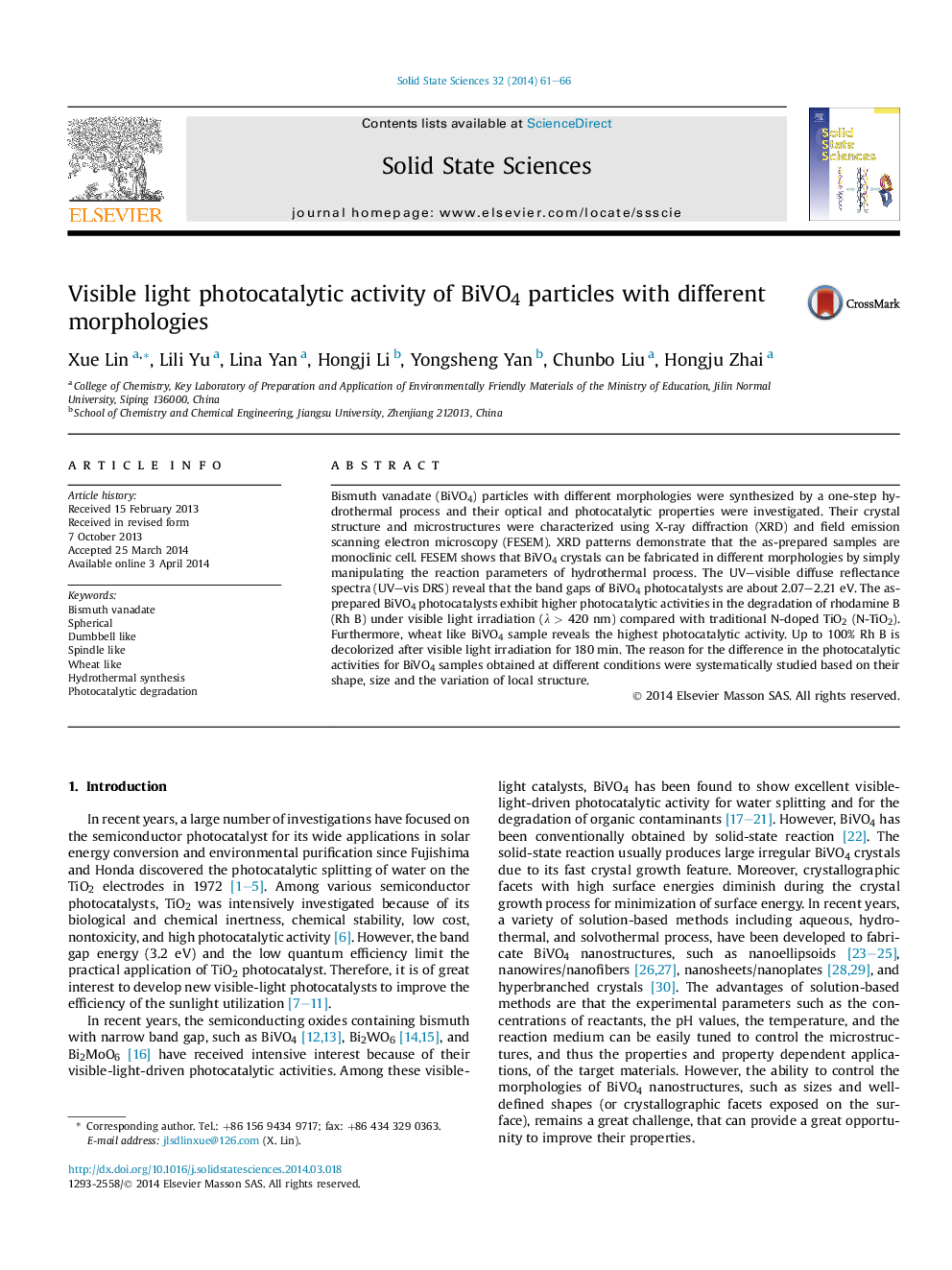| Article ID | Journal | Published Year | Pages | File Type |
|---|---|---|---|---|
| 1504474 | Solid State Sciences | 2014 | 6 Pages |
•BiVO4 particles with different morphologies were synthesized.•BiVO4 samples presented outstanding visible-light-induced photocatalytic performance.•Wheat like BiVO4 sample showed the highest photocatalytic activity.
Bismuth vanadate (BiVO4) particles with different morphologies were synthesized by a one-step hydrothermal process and their optical and photocatalytic properties were investigated. Their crystal structure and microstructures were characterized using X-ray diffraction (XRD) and field emission scanning electron microscopy (FESEM). XRD patterns demonstrate that the as-prepared samples are monoclinic cell. FESEM shows that BiVO4 crystals can be fabricated in different morphologies by simply manipulating the reaction parameters of hydrothermal process. The UV–visible diffuse reflectance spectra (UV–vis DRS) reveal that the band gaps of BiVO4 photocatalysts are about 2.07–2.21 eV. The as-prepared BiVO4 photocatalysts exhibit higher photocatalytic activities in the degradation of rhodamine B (Rh B) under visible light irradiation (λ > 420 nm) compared with traditional N-doped TiO2 (N-TiO2). Furthermore, wheat like BiVO4 sample reveals the highest photocatalytic activity. Up to 100% Rh B is decolorized after visible light irradiation for 180 min. The reason for the difference in the photocatalytic activities for BiVO4 samples obtained at different conditions were systematically studied based on their shape, size and the variation of local structure.
Graphical abstractFigure optionsDownload full-size imageDownload as PowerPoint slide
